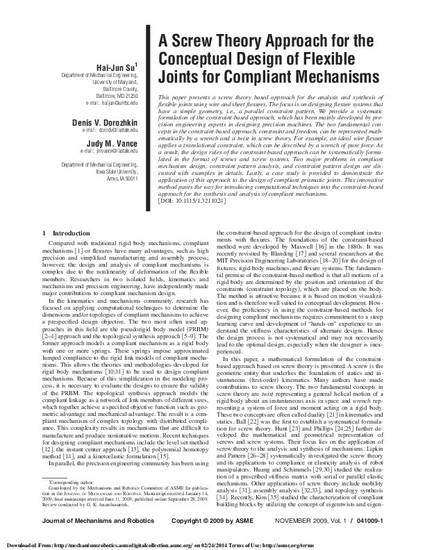
This paper presents a screw theory based approach for the analysis and synthesis of flexible joints using wire and sheet flexures. The focus is on designing flexure systems that have a simple geometry, i.e., a parallel constraint pattern. We provide a systematic formulation of the constraint-based approach, which has been mainly developed by precision engineering experts in designing precision machines. The two fundamental concepts in the constraint-based approach, constraint and freedom, can be represented mathematically by a wrench and a twist in screw theory. For example, an ideal wire flexure applies a translational constraint, which can be described by a wrench of pure force. As a result, the design rules of the constraint-based approach can be systematically formulated in the format of screws and screw systems. Two major problems in compliant mechanism design, constraint pattern analysis, and constraint pattern design are discussed with examples in details. Lastly, a case study is provided to demonstrate the application of this approach to the design of compliant prismatic joints. This innovative method paves the way for introducing computational techniques into the constraint-based approach for the synthesis and analysis of compliant mechanisms.
Available at: http://works.bepress.com/judy_vance/20/

This article is from Journal of Mechanisms and Robotics (2009): 041009, doi:10.1115/1.3211024. Posted with permission.